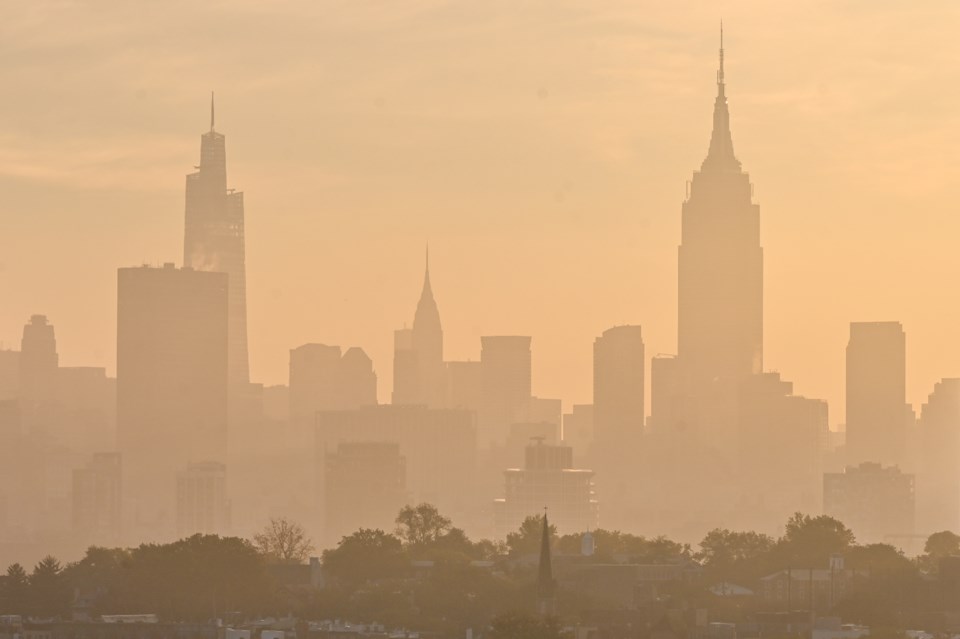The New York State Department of Environmental Conservation (DEC) has issued an Air Quality Health Advisory for Friday, July 5, 2024, for ozone pollution in the New York City Metro, Long Island, and Lower Hudson Valley regions.
DEC meteorologists have predicted levels of ozone are expected to exceed an Air Quality Index (AQI) value of 100. The advisory will be in effect 11 a.m. through 11 p.m.
The Friday, July 5, Air Quality Health Advisory regions consists of: New York City Metro, which includes New York City and Rockland and Westchester counties; Long Island, which includes Suffolk and Nassau counties; and Lower Hudson Valley, which includes Dutchess, Orange, Putnam, Sullivan, and Ulster counties.
Summer heat can lead to the formation of ground-level ozone, a major component of photochemical smog. Automobile exhaust and out-of-state emission sources are the primary sources of ground-level ozone and the most serious air pollution problems in the northeast. This surface pollutant should not be confused with the protective layer of ozone in the upper atmosphere.
Ozone is not a direct emission, and is produced indirectly when sunlight chemically reacts with nitrogen oxides (NOx) and volatile organic compounds (VOCs) from automobile exhaust and industrial emissions. High ozone is not as visible as PM2.5 because it is a colorless gas, but will produce hazy skies and reduce visibility in high concentrations.
People, especially those with cardiovascular disease and those who have respiratory disease (such as asthma), young children, those who exercise outdoors, and those involved in vigorous outdoor work should consider limiting strenuous outdoor physical activity when ozone levels are the highest (generally afternoon to early evening). When outdoor levels of ozone are elevated, going indoors will usually reduce exposure. Individuals experiencing symptoms such as shortness of breath, chest pain, or coughing should consider consulting their personal physician.
New Yorkers also are urged to take the following energy-saving and pollution-reducing steps:
- Use mass transit or carpool instead of driving
- Conserve fuel and reduce exhaust emissions by combining necessary motor vehicle trips
- Turn off all lights and electrical appliances in unoccupied areas
- Use fans to circulate air. If air conditioning is necessary, set thermostats at 78 degrees
- Close the blinds and shades to limit heat build-up and to preserve cooled air
- Limit use of household appliances. If necessary, run the appliances at off-peak (after 7 p.m.) hours. These would include dishwashers, dryers, pool pumps and water heaters
- Set refrigerators and freezers at more efficient temperatures
- Reduce or eliminate outdoor burning and attempt to minimize indoor sources of PM 2.5 such as smoking
To stay up-to-date with announcements from DEC, sign up to receive Air Quality Alerts or call the toll-free Air Quality Hotline (1-800-535-1345).




